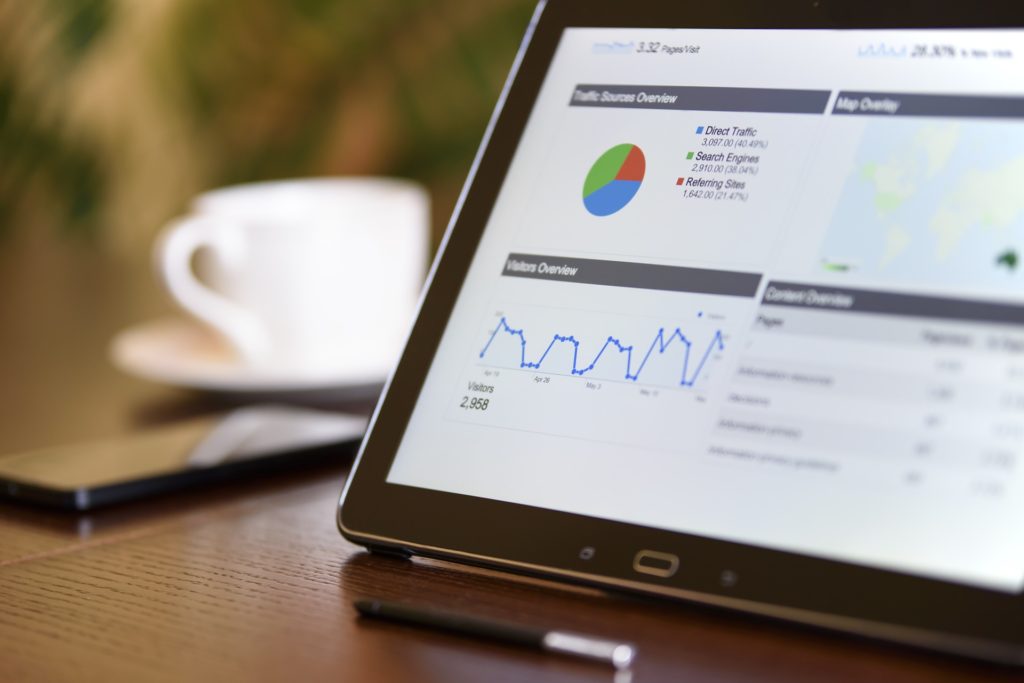As we head into a new year with 12 wide-open months in front of us, it’s a good time to consider how to make 2017 our best year of marketing to date. While we can’t predict exactly what tactics will dominate the year, we can make some educated guesses based on the marketing trends that defined 2016.

Here’s how I see it: As consumers become increasingly tech-savvy, marketing efforts will continue to focus on creating engaging and visually-stimulating experiences for multiple devices. Marketers will also focus on freeing up time for these advanced efforts through influencer assistance, narrowed targets, and technology simplification.
To help you prepare a successful marketing road map for the year ahead, here’s more on the five trends I believe will mark 2017:
#1: Mobile-First Marketing Will Prevail
In 2015, Google rolled out an algorithm update that boosted search engine rankings for mobile-friendly websites. Aptly named Mobilegeddon, the update all but forced marketers to take a hard look at their mobile readiness. In 2016, Google’s Accelerated Mobile Pages Project (AMP) took off, making it easier than ever for brands to improve page load speeds on mobile devices. And most recently, Google announced plans to shift to mobile-first indexing, meaning its algorithms will primarily use the mobile version of a site for ranking purposes.
The continued growth of mobile use—and Google’s continued effort to improve the mobile experience for users—indicates that mobile-first marketing strategies will be extremely important in 2017. This means brands will increasingly design their websites and campaigns around the mobile experience, providing the kind of personalization and relevance mobiles users seek.
Aside from general website design, mobile-first marketing strategies must consider social media presence (since nearly 80% of social media activity now occurs on mobile devices). Mobile strategies should also consider producing and formatting content (such as videos) that fits mobile screens and engages users with short actions or small bits of information.

#2: Advanced Visual Content
In 2017, more companies will take advantage of advanced visual content to engage and entertain prospects and customers. In fact, offering some level of interactive marketing will be seen as a necessity. With options like gamification, traditional videos, live videos, and virtual reality, brands will experiment with more creative content formats.
To get on board, marketers should consider using live video streaming at industry conferences and events. They should also carve out time to develop a concrete video marketing strategy if they haven’t already done so. Syndacast believes that 74% of all internet traffic in 2017 will be video, so this is a great place to start with interactive marketing.

#3: Influencers Will Boost Brand Efforts
With all the technological advances we’ve seen in recent years, reaching consumers and drawing them in has become increasingly complex. And that means marketers are looking for new strategies that can boost their efforts without adding more to their workload. Enter influencer marketing.
Influencer marketing involves partnering with subject matter experts—particularly those who have an impressive online following—on the creation and distribution of powerful, authoritative content. While many marketers tapped influencer expertise in 2016, we will see even more brands exploring (and mastering) influencer marketing in 2017.
The key to success with this marketing strategy is finding experts who value your brand and have strong influence in your target market. You want to work with influencers who can serve as an extension of your in-house marketing or content team to bring more eyes and ears to your efforts. That way, your team is able to save time but still bring in leads.
#4: Account-Based Marketing Will Take Hold
Another marketing strategy that will continue to gain prominence in 2017 is account-based marketing (ABM), which focuses on targeting large accounts rather than individual leads. In 2015, 90% of marketers indicated a belief in ABM as a key B2B marketing strategy. And in 2016, we saw a lot of brands looking to ABM as a way to close bigger deals and get more bang for their buck.
In 2017, ABM will truly take hold and become a major strategy for business growth. Considering most business purchase decisions are made by more than one person, ABM is a powerful way to market to target companies. It also tends to lead to better sales and marketing alignment, which is an added bonus.
To develop a successful ABM strategy for 2017, marketers must first decide on a list of accounts to target. This is somewhat similar to creating a buyer persona in that it involves careful analysis of campaign performance and consumer behavior. But it also requires more specific analysis of the brands a company hopes to win over.
#5: Marketing Technology Stacks Will Shrink
As the job of a marketer grows ever more complex with advanced ways to reach consumers and new strategies to implement, it’s becoming exceedingly necessary to eliminate as much of the clutter as possible. And a big part of that involves weeding out unnecessary technological resources and focusing on a handful of the most powerful platforms.
In 2017, more marketers will pare down their technology stacks to make room for new or more versatile tools. For example, they might look to a flexible data management system that not only solves marketing problems (like automated lead capture and CRM data routing) but also solves problems for other departments across the business.
The key to maintaining a manageable and effective technology stack is to look for resources that are cost-effective, versatile, and easy to implement and use. And for marketers, it’s highly important to find insightful tools that allow for proper campaign measurement and analysis. No matter how small a company’s marketing technology stack becomes, analytics tools will continue to be important in 2017 and beyond.

Conclusion
There’s no doubt about it: 2017 is going to be an exciting year for marketers. Whether you have a fully fleshed out plan for the year ahead or not, it’s never too late to make a few tweaks to stay ahead of the game.



2 Comments
Lawrence Tam · February 23, 2017 at 12:14 pm
mobile is the wave of the future… snapchat will gain ground but instagram will be king for a log of entrepreneurs looking for traffic on a budget.
Alecia Stringer · February 23, 2017 at 12:20 pm
It’s neat to be creative and leverage the new technology for our business and life. Allows us to keep connecting with new ideas. Thanks for the new ideas too!